The most popular option for a display is the Retina display, a technology that was launched in 2012 with the iPad 3 and has been used ever since. It has been used in other mobile devices with varying success, but it was never used in monitors before the launch of the Apple iMac in late 2013. The standard for the Retina display is a resolution of around 300 pixels per inch. The Retina display is generally known to be great for a number of reasons, including the fact that it gives you a very crisp display, making it ideal for content that has a high pixel density.
Quantum dots are one of the hottest topics in the Android world, and for good reason. Some of them are super-bright, while others use a different kind of phosphorous that is cheaper and more environmentally friendly to produce. However, there are also some Quantum Dots on the market that are not as impressive as others. Now, it’s time to find out if Quantum Dot vs IPS is really as significant as it is made out to be.
Quantum dots are tiny light-emitting diodes that have many potential uses. They’re typically produced as a semiconductor material that can be printed onto a variety of surfaces. In some cases they’re printed onto large screens (like televisions) to produce images with exceptional brightness and color. And in some cases they’re printed onto tiny displays to produce displays that are brighter than those made with LCDs but still have the same pixel density as TN screens.
These days, there are many various kinds of monitors to choose from. Your choices expand as technology improves. You’ve probably heard of LCD monitors and TVs by now, and you’ve probably heard about OLED TVs as well. Do you, however, understand the differences between the various technologies used behind the screens? You may not know it, but the technology that drives your display has a significant impact on the features you desire from your monitor or television. This covers, among other things, color fidelity, latency, and viewing angles. Of course, depending on the model you choose, these characteristics will be better or worse due to technological variations. Thankfully, compared to 10 years ago, many monitors are very inexpensive.
In this tutorial, we’ll look at the differences between different display screens on the market before comparing LG Nano IPS monitors and TVs to Samsung’s Dot Quantum technology, which is one of the most popular options.
LCD
LCDs, or Liquid Crystal Displays, are arguably the most prevalent display these days, having originally gained popularity over ten years ago when the previous most popular choice, CRT displays, became outdated owing to technological advancements around the same time. Unlike LCD panels, which utilize liquids to create crisp colors, previous CRTs used vacuum displays, electron guns, and phosphorescent screens to produce pictures. LED lights illuminate the liquid crystals of LCD displays from behind, assisting in the production of the pictures on the screen. LCD displays may utilize the flatscreen technology we’ve all come to love, while older CRT screens were considerably bulkier than today’s display screens.
There are many kinds of technology that assist run LCDs, which we’ll go over in detail in the following paragraphs. The state of Tennessee (Twisted Nematic), IPS (In-Plane Switching), and VA are the most common kinds (Vertical Alignment).
TN (Twisted Nematic)

Twisted Nematic is likely to have powered every LCD display panel you’ve ever owned. Because of TN, LCD panel costs have become very competitive. They’re inexpensive to make and therefore sell, but they’re also extremely quick. This makes them suitable for casual users looking for a good display screen to use with their laptops or as a television.
Because of their high refresh rates of 100Hz and 144Hz, TN screens are ideal for gaming. TN display panels are excellent all-rounders since they have little latency.
Even if they’re inexpensive, you’ve probably noticed the drawbacks of utilizing a TN screen. If you look at your TN display screen from the side or above, the colors will undoubtedly fade and the clarity will deteriorate.
IPS (International Press Service) (in Plain-Switching)
IPS display screens have been around for a long time and are often used by professionals that work in the fields of painting, photography, and video production. This is due to the excellent color accuracy of IPS display panels. IPS displays, unlike TN displays, can be seen from a variety of angles while maintaining sharpness and color fidelity. IPS displays have a reputation for being costly, however due to manufacturers utilizing less expensive IPS panels, this has changed in recent years.
However, since IPS displays have slower refresh rates, they are not the kind of LCD panel you want to choose if you’re a gamer anticipating a fast frame rate. They’re still an excellent option for professional work and won’t break the budget.
V.A. (Vertical Alignment)
VA displays are a cross between TN and IPS displays. They are less costly than IPS panels and have acceptable refresh rates. VA screens can also be seen from a variety of angles while maintaining a high level of color accuracy and clarity, making them ideal for TVs with seats facing them from various angles.
Because VA display panels have a high latency, they suffer from the same problems as IPS displays for gaming, thus you may see ghosting on your screen. Again, this isn’t ideal for games, but if you don’t mind the slowest refresh rates and a little blurring, a VA screen may be a decent alternative if you can’t afford an IPS.
Quantum Dot
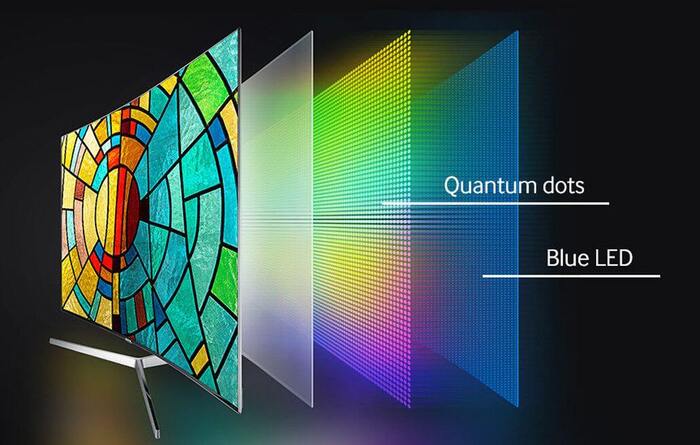
Quantum Dot displays are not the same as LCD displays. That’s because they illuminate the screen with a completely different, and perhaps better, technology. Whereas most LCD panels utilize blue LED lights to illuminate a white screen in front of them, Quantum Dot displays are powered by small dots that convert to light. This distinguishes Quantum Dot technology from LCD displays in that it may produce a more uniform white light that can be individually adjusted to cover a larger area of the screen.
OLED
The Organic Light Emitting Diode, or OLED, is a brand-new technology that allows each OLED pixel to produce its own light. Backlighting systems, such as those used in LCD panels, are no longer required. OLED displays offer the most perfect black screens and the purest white screens, as well as better overall color accuracy and brightness, since each pixel can be switched on and off independently. OLED displays can be seen from a variety of perspectives while maintaining their clarity, brightness, and overall image quality. On your monitor, OLED displays offer the most lifelike pictures. It’s reasonable that OLED displays are expensive and difficult to come by. Because this technology is so new, it’s fair to assume that it will take a few years before other businesses release their own displays using the technology.
Monitors: LG Nano IPS vs. Samsung Quantum Dot
LG’s Nano IPS monitors and TVs, as well as Samsung’s Quantum Dot monitors and TVs, are two popular choices for these two technologies. Both of these display technologies accomplish roughly the same thing, but each has its own set of advantages and disadvantages.
Nano IPS panels provide a broader color range of up to 98 percent DCI-P3 or 135 percent sRGB, while Samsung’s QD technology offers better contrast and brightness.
We’ll be comparing the LG 27″ Class UltraGearTM QHD 144Hz Nano IPS 1ms Gaming Monitor with G-Sync® with the Samsung 27″ CFG73 Gaming Monitor with Quantum Dot in order to compare both Nano IPS and Quantum Dot technologies. Both of these displays are designed for gaming and offer many features that help to create perfect gaming experiences.
27″ UltraGearTM QHD 144Hz Nano IPS 1ms Gaming Monitor with G-Sync® 27″ Class UltraGearTM QHD 144Hz Nano IPS 1ms Gaming Monitor with G-Sync®
Cost: $499
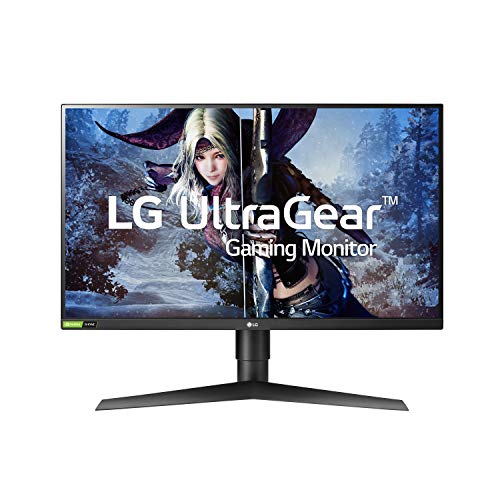
| Size | 68.4cm / 27″ | Type of Panel | IPS |
| Color Palette | DCI-P3 (typ.) 98 percent, DCI-P3 (typ.) 90 percent (min.) | Depth of Color (Num of Colours) | 1.07B |
| Pitch of Pixels | 0.2331 x 0.2331 x 0.2331 x 0.2331 x 0.2331 | Ratio of Aspects | 16:9 |
| Resolution | 2560 x 1440 pixels | Luminousness (Typ.) | 280cd/m2 (Typ.) 350cd/m2 (Typ) (Min.) |
| Ratio of Contrast | 700:1 (Typ), 1000:1 (Typ) (Min.) | (GTG) | 1 millisecond (faster) |
| Angle of View | 178/178 | Surface Preparation | 25 percent haze, 3H |
The 27″ UltraGearTM QHD 144Hz Nano IPS 1ms Gaming Monitor with G-Sync® is a beautiful gaming monitor. It not only has a 1ms response time, but it also has colors that are 35 percent better than sRGB. Thanks to its nanoparticles, the Nano IPS panels within this monitor enable it to reproduce colors more precisely. Nano IPS displays are also FreeSync and G-sync compatible, which enhances your gaming experience by reducing screen tearing and stuttering.
27-inch CFG73 Quantum Dot Gaming Monitor
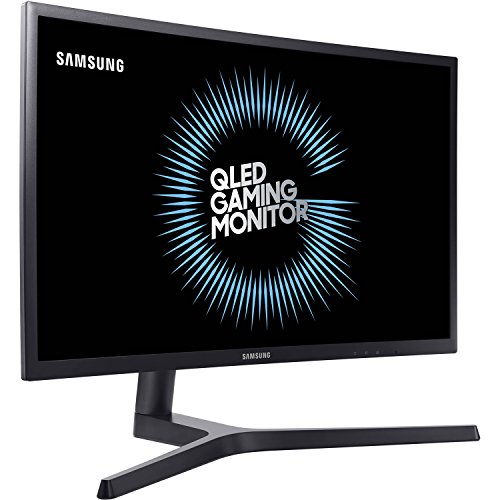
| Size | 11.05′′ x 24.46′′ x 21.30′′ | Type of Panel | n/a |
| Color Palette | Typ 88% | Depth of Color (Num of Colours) | 16.7M |
| Pitch of Pixels | 0.0272 x 0.0272 x 0.0272 x 0.0272 x 0.027 | Ratio of Aspects | 16:9 |
| Resolution | 1920 x 1080 pixels | Luminousness (Typ.) | 250cd/m2 (Typ. ), 350cd/m2 (Typ. ), 350cd/m2 (Typ. ), 350cd/ (Min.) |
| Ratio of Contrast | 3,000:1(Typ.) | (GTG) | 1ms |
| Angle of View | 178°(H)/178°(V) | Surface Preparation | n/a |
Another excellent gaming display is the 27-inch CFG73 Gaming Monitor. You’ll get the greenest greens and the deepest reds with its strong contrast. It has a 3x higher contrast ratio than the LG Nano (3000:1), making it ideal for playing colorful games. It has a decent resolution, however it falls short of the LG Nano Dot Monitor. There is no change in terms of viewing angle between it and the LG Nano.
Samsung Quantum Dot vs. LG Nano IPS: TVs
Nano IPS TVs from LG and Quantum Dot TVs from Samsung provide the same sensations as its monitor relatives, but on a much larger display screen.
First, let’s look at the benefits and drawbacks of each TV technology.
LG Nano IPS TVs
$600 is the starting point.
| Pros | Cons |
| Color gamut is impressive. | Expensive |
| FreeSync | Average luminosity |
| Viewing angles that are favorable | Contrast is average. |
We can see how amazing Nano IPS technology is in TVs by looking at the LG Nano91 55 inch 4K TV as an example. Because of the Nanoparticles that illuminate each corner of the screen, these big TVs can be seen from any angle without losing clarity. There will be no ghosting effects since these particles are packed so closely together. You receive the most accurate colors on your screen since each particle generates its own light. This implies the deepest blacks (no grey haze), but the brightness of these displays isn’t the greatest on the market, particularly when compared to the Quantum Dot.
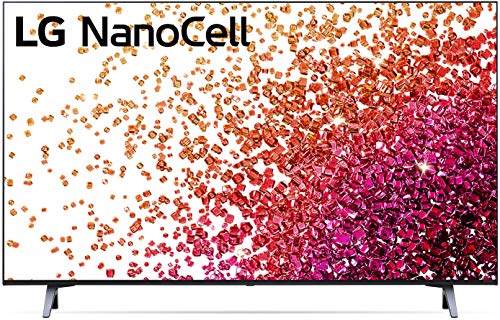
The LG NanoCell TV is powered by the 7 Gen4 AI Processor 4K, a ground-breaking processor that analyzes and optimizes content using machine learning techniques. Every image and sound change is made automatically, ensuring that whatever you watch looks fantastic.
Samsung Quantum Dot TVs
$600 is the starting point.
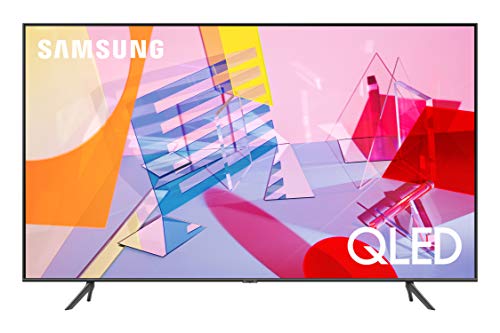
| Pros | Cons |
| Whites that are brilliant | Blacks who are average |
| Exceptionally brilliant | Expensive |
| Contrasts that pop | Bleeding light |
Samsung Quantum Dot TVs, like Quantum Dot monitors, have a high contrast ratio due to HDR and a brightness of up to 1000 nits, or “as bright as 1k candles.” On Quantum Dot TVs, pictures are photorealistic, and a billion distinct color combinations are produced as a light source to convey the most realistic images on SUHD TVs’ 10-bit screens. This is a 64-fold increase in color expressiveness over traditional 8-bit panel TVs.
Ultra Black is a feature on Samsung Quantum Dot TVs that efficiently disperses light from your screen, eliminating the need to shut your curtains to reduce screen glare. You may relax and enjoy your movie without having to worry about the lights changing. Another remarkable characteristic of Quantum Dot TVs is their ability to remaster content. Your TV will ‘remaster’ your program or movie in real time to make it appear the best it can.
While the whites on Samsung’s Quantum Dot TVs are excellent, the blacks might be improved. Light bleed, which is typical with Quantum Dot TVs, has also been reported by some customers. Unless you’re sitting directly in front of your TV, the edges of a bright picture may seem fuzzy, unlike Nano IPS TVs, which can provide a flawless image from any viewing angle.
Final Thoughts
In terms of display displays, it’s safe to state that both of these technologies provide remarkable results. Both are still in their infancy and may need some polishing. The Nano IPS TVs provide excellent viewing angles without blurring or losing clarity, although the contrast might be improved. Samsung’s Quantum Dot display panels provide excellent color contrast and dazzling brightness in light situations like movies and games, but they struggle to create the deepest of blacks, and light bleed may occur from time to time.
The Quantum Dots in the LG G7 ThinQ are arguably the most impressive feature of the phone, although they don’t provide the best picture quality.. Read more about quantum ips vs qled and let us know what you think.
{“@context”:”https://schema.org”,”@type”:”FAQPage”,”mainEntity”:[{“@type”:”Question”,”name”:”Is quantum dot better than IPS?”,”acceptedAnswer”:{“@type”:”Answer”,”text”:”
Quantum dot is a type of LED that has been developed to have better color accuracy and brightness. IPS stands for In-Plane Switching, which refers to the way in which light is emitted from an LED.”}},{“@type”:”Question”,”name”:”Is Nano IPS better than quantum dot?”,”acceptedAnswer”:{“@type”:”Answer”,”text”:”
Nano IPS is a type of LCD display, while quantum dot is a type of LED display. They both have their own pros and cons, but for the most part they are similar.”}},{“@type”:”Question”,”name”:”Is there anything better than IPS?”,”acceptedAnswer”:{“@type”:”Answer”,”text”:”
IPS is a type of monitor that has been around since the late 1990s. It was originally introduced to the market by Samsung and has since become one of the most popular types of monitors in use today.”}}]}
Frequently Asked Questions
Is quantum dot better than IPS?
Quantum dot is a type of LED that has been developed to have better color accuracy and brightness. IPS stands for In-Plane Switching, which refers to the way in which light is emitted from an LED.
Is Nano IPS better than quantum dot?
Nano IPS is a type of LCD display, while quantum dot is a type of LED display. They both have their own pros and cons, but for the most part they are similar.
Is there anything better than IPS?
IPS is a type of monitor that has been around since the late 1990s. It was originally introduced to the market by Samsung and has since become one of the most popular types of monitors in use today.
Related Tags
This article broadly covered the following related topics:
- quantum dot vs ips
- ips vs tn
- ips vs led
- ips vs lcd
- ips display vs lcd

